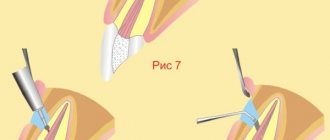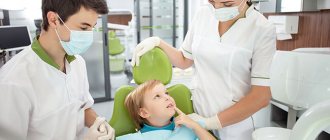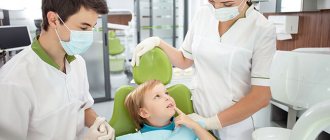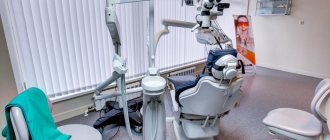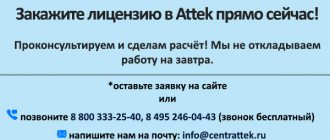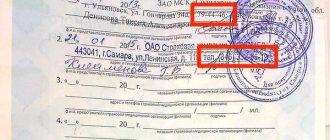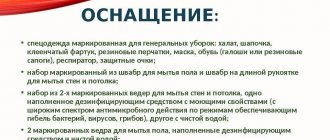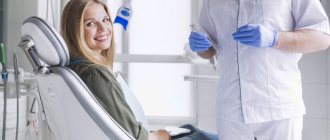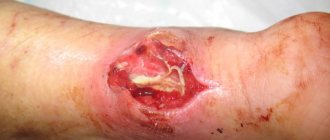Endoscopic interventions are minimally invasive, highly informative and effective medical services aimed at diagnosis and treatment (endoscopic manipulation, including endoscopic surgery) of various diseases. Today it is impossible to imagine modern oncology, gastroenterology, therapy, urology, pediatrics, traumatology without modern endoscopy. In the article we will pay attention to compliance with sanitary and epidemiological requirements for endoscopy rooms.
General sanitary and epidemiological requirements for organizations engaged in medical activities are contained in SanPiN 2.1.3.2630-10[1]. This document, in particular, provides requirements for placement, design, equipment, maintenance, anti-epidemic regime, preventive and anti-epidemic measures, working conditions for personnel, catering for patients and personnel of organizations carrying out medical activities. Special sanitary and epidemiological requirements for endoscopic interventions are given in SanPiN 3.1.3263-15[2]. Let us remind you what requirements are established by this document.
Structure, composition, technical features of premises.
In accordance with clause 5.1 of SanPiN 3.1.3263-15, the endoscopy department (office) must have the following premises:
1) doctor's office;
2) separate endoscopic manipulation zones (depending on the types of interventions performed) for:
- bronchoscopy; studies of the upper gastrointestinal tract;
- studies of the lower gastrointestinal tract;
3) washing and disinfection room;
4) auxiliary premises.
To conduct studies of the lower parts of the digestive tract, a sanitary facility must be provided (clause 5.3 of SanPiN 3.1.3263-15).
It is important to note that the manipulation room for bronchoscopy belongs to cleanliness class B; this room is equipped with a supply and exhaust ventilation system with a predominance of air flow. The supplied air must be cleaned and disinfected with an efficiency of at least 95%. The room for processing endoscopes should be equipped with general supply and exhaust ventilation and local exhaust ventilation with removal of solution vapors at the level of the washing baths.
The room in which endoscopic interventions are performed must be equipped with a sink for washing the hands of medical workers, with hot and cold water supply, including a backup hot water supply.
Note:
The location of technological equipment in the room for processing endoscopes must ensure the flow of all stages of processing endoscopes in accordance with the requirements of sanitary rules. In newly designed medical organizations, planning solutions should be provided that eliminate the cross-flow of clean and dirty endoscopes. For existing offices, the endoscope processing room is functionally divided into a conditionally dirty area, intended for final cleaning, and a conditionally clean area, where high-level disinfection, drying and storage of endoscopes is carried out. A sink is installed in the endoscope processing room for medical personnel to wash their hands. It is not permitted to be used for other purposes.
Area of responsibility during interventions.
In accordance with clause 3.2 of SanPiN 3.1.3263-15, in each structural unit of a medical organization performing endoscopic intervention, persons responsible for organizing and carrying out anti-epidemic measures, including the quality of processing of endoscopic equipment, must be identified.
The head (doctor) of the structural unit (office) performing endoscopic interventions must develop work instructions for processing endoscopes available in the equipment of the structural unit (office), which is approved by the head of the medical organization. The specified instructions must be drawn up on the basis of the provisions of these sanitary rules, taking into account the type, brand (model) of endoscopes, operational documentation for them and equipment intended for their processing and storage, instructions for the use of chemical cleaning, disinfection and sterilization agents used (clause 3.3 of SanPiN 3.1.3263-15).
Doctors directly involved in performing endoscopic interventions and processing endoscopic equipment must undergo advanced training at least once every five years on the basis of organizations licensed to conduct educational activities under programs of additional professional education, including issues of ensuring the epidemiological safety of endoscopic interventions (clause 3.4 SanPiN 3.1.3263-15).
Each endoscope equipped at a structural unit in which endoscopic interventions are performed is assigned an identification number, which includes information about its type, model and serial number. The identification number of the endoscope used during a medical intervention must be indicated in the endoscopic intervention protocol, in the special notes column of the journal for recording studies performed in the endoscopy department, or in the journal for recording surgical interventions (clause 3.6 of SanPiN 3.1.3263-15).
LIST OF SERVICES AND TIME STANDARDS
The economist begins calculations by working out the list of medical services (price list). According to the letter of the Ministry of Health of Russia dated July 4, 2018 No. 17-2/10/2-4323, when forming a list of medical services, a medical organization must be based on the Regulations on Licensing [1] and the Nomenclature of Medical Services [2].
Objects of cost calculation are medical care, which can be represented by:
• a list of simple medical services (individual studies, manipulations, procedures, surgical interventions);
• a list of complex medical services (bed days in specialized departments of hospitals);
• a list of comprehensive medical services for completed cases of outpatient and inpatient treatment (medical and economic standards).
Let us dwell in more detail on the calculation of dental services, namely orthopedic appointments. We will perform the calculation in stages.
First, we collect information about the list of services of a medical institution, study the patient service system, work and technological processes in the institution for a specific medical service. Then we break down medical services into individual procedures (manipulations) and collect information about a specific procedure (manipulations), indicators of general clinical expenses of a medical institution, departmental expenses and other supporting information.
The generated list of medical services, the cost of which must be calculated in this article, is presented in Fig. 1.
The list of services, their cost, UET standards and other indicators given in this article are conditional and are intended to demonstrate the methodology for calculating costs in an Excel model.
To simplify calculations, eliminate errors and routine of repeatedly entering the same data, and also focus more management attention on the regulatory part, we automate calculations in Excel using the VLOOKUP function.
You can use the VLOOKUP function to search the first column of a range of cells (two or more worksheet cells; cells in the range can be either adjacent or nonadjacent) and then return the value from any cell in the same row in the range. To use VLOOKUP, service codes must have simple sequential numbering (see Figure 1).
Tariffs for each paid medical service from the list must be justified by economic calculations:
• planned calculation of paid medical services with breakdowns of cost items (cost items depend on the specifics of the services provided);
• consumption standards for basic and auxiliary materials approved in accordance with the established procedure;
• time standards;
• technical characteristics of the work for each item in the price list;
• certificates on the level of indirect costs.
According to the Instructions for calculating the cost of medical services (temporary)[3], the cost of services is calculated based on the actual costs of the institution.
First of all, we will work on direct costs.
Direct costs include costs directly related to the medical service and consumed in the process of its provision:
• remuneration of key personnel;
• accruals for wages of key personnel;
• material costs consumed in the process of providing medical services in full (medicines, dressings, food, disposable medical supplies, etc.);
• depreciation of soft equipment by main divisions;
• wear and tear of medical and other equipment used directly in the diagnostic and treatment process.
Requirements for health protection of medical personnel.
Medical workers of structural units of a medical organization performing endoscopic interventions must undergo preliminary and periodic medical examinations (clause 12.1 of SanPiN 3.1.3263-15). Also, medical personnel of structural units of a medical organization performing endoscopic interventions must be vaccinated against infectious diseases in accordance with the national calendar of preventive vaccinations (clause 12.2 of SanPiN 3.1.3263-15).
Before being allowed to work related to performing endoscopic interventions or processing endoscopic equipment, each medical worker is required to undergo special primary training on the rules for processing endoscopes and workplace health instruction.
All medical personnel of structural units performing endoscopic interventions must be provided with medical clothing (gowns, surgical suits, caps, masks) in accordance with the equipment sheet (at least three sets per worker) and personal protective equipment in sufficient quantities.
The head of the medical organization is responsible for providing medical workers with medical clothing and personal protective equipment (clause 12.4 of SanPiN 3.1.3263-15).
A change of medical clothing (gown or pajamas, cap) for the staff of the department (office) inside the luminal endoscopy should be carried out as it gets dirty, but at least twice a week, for the personnel of the surgical (endoscopic) departments (offices) performing surgical endoscopic interventions - as pollution, but at least once a day (clause 12.5 of SanPiN 3.1.3263-15).
Before performing each non-sterile endoscopic intervention, the personnel involved in it perform hand hygiene in accordance with the requirements of SanPiN 2.1.3.2630-10[3] and put on personal protective equipment (disposable mask, goggles, disposable medical gloves, waterproof gown or disposable apron ).
Before carrying out each sterile endoscopic intervention, the personnel involved in it clean their hands according to the method of treating surgeons’ hands in accordance with the requirements of SanPiN 2.1.3.2630-10, put on a cap, mask, sterile gown and gloves.
To reduce the risk of infection of personnel and ensure the reliability of processing flexible endoscopes for non-sterile intervention, a mechanized method using MDM is used. With a large turnover of endoscopes (simultaneous processing of three or more endoscopes of the same type), a mechanized method of processing endoscopes is mandatory.
To prevent injuries from instruments to endoscopes with piercing surfaces, it is necessary to minimize personnel contact with untreated instruments using containers with perforated inserts, MDMs and ultrasonic cleaners. It is prohibited to use injection needles to collect pathological material from biopsy forceps.
Cases of injury to medical personnel at all stages of preparation for sterilization of instruments for endoscopes with piercing-cutting surfaces must be recorded in the logbook of injuries and emergency situations.
Sanitary measures in the endoscopy room.
Special requirements are imposed on sanitary measures carried out in the endoscopy room. Thus, in accordance with clause 5.16 of SanPiN 3.1.3263-15, cleaning and preventive disinfection in manipulation rooms for non-sterile endoscopic interventions, in the washing and disinfection room should be carried out as they become dirty, but at least once per shift or twice a day. After each patient, the surface of the couch must be disinfected. General cleaning should be done once a week.
All types of cabinets for storing processed endoscopes must be cleaned and disinfected with a chemical solution in a bactericidal mode at least once a week, unless otherwise provided in the operating instructions (clause 5.15 of SanPiN 3.1.3263-15).
Preliminary cleaning of used endoscopes and instruments for them is carried out in the same room where the intervention was carried out (clause 5.6 of SanPiN 3.1.3263-15). Final cleaning (final cleaning combined with disinfection) and high-level disinfection of endoscopes intended for non-sterile endoscopic interventions are carried out in a specially equipped washing and disinfection room or room for processing endoscopes (clause 5.7 of SanPiN 3.1.3263-15).
When processing endoscopes and other medical products as part of endoscopic and endosurgical complexes, as well as instruments for endoscopes, medical equipment products, sterilizers, washing machines, ultrasonic cleaners, detergents and disinfectants approved for use for these purposes in the Russian Federation must be used.
It is extremely important that when choosing cleaning, disinfection, as well as sterilization products and methods, the recommendations of manufacturers of endoscopes and instruments for them regarding the impact of a particular product on the materials of these medical devices should be taken into account. It is not allowed to use disinfectants for cleaning or cleaning combined with disinfection, which in the recommended modes have a fixing effect on organic contaminants, including those containing alcohols and aldehydes (clause 7.3 of SanPiN 3.1.3263-15).
Standard equipment for an orthopedic dentistry office
Appendix No. 3 to the Procedure for providing medical care to the adult population for dental diseases, approved by order of the Ministry of Health and Social Development of the Russian Federation dated July 31, 2022 N 786n
STANDARD OF EQUIPMENT FOR A DENTAL CLINIC
Standard equipment for an orthopedic dentistry office
| N p/p | Code of type of nomenclature classification of medical devices <1> | Name of the type of medical device in accordance with the nomenclature classification of medical devices | Name of equipment (equipment) | Required quantity, pcs. |
| 1. | 119630 | Dental unit | Work place (set of equipment) for a dentist: Dental unit (US), including a dentist's unit (drill), a dental chair, a dental hydraulic unit, a dental operating lamp (these parts can be attached to a single supporting frame or attached mutually or separately to load-bearing structures (wall, furniture)) or Place working universal dentist (MRU), including a US equipped with a turbine, micromotor, diathermocoagulator, ultrasonic scaler, vacuum cleaner, X-ray viewer | at least 1 |
| 2.<2> | 122760 | Gas formaldehyde sterilizer | Sterilizer for instruments, in the absence of a centralized sterilization department | 1 |
| 125800 | Microwave sterilizer for unpackaged products | |||
| 330780 | Steam sterilizer | |||
| 125810 | Steam sterilizer for unpackaged products | |||
| 150480 | Ozone/hydrogen peroxide sterilizer | |||
| 173090 | Dry heat sterilizer | |||
| 183670 | Chemical liquid sterilizer | |||
| 188040 | Sterilizer-boiler | |||
| 211070 | Ethylene oxide sterilizer | |||
| 211110 | Ethylene oxide/steam sterilizer | |||
| 215790 | Plasma sterilizer | |||
| 237470 | Gas sterilizer based on hydrogen peroxide | |||
| 253700 | Steam sterilizer | |||
| 291960 | Electrolytic sterilizer | |||
| 330770 | Bactericidal sterilization chamber | |||
| 3.<4> | 119850 | External defibrillator with manual control | Automatic external defibrillator | 1 per department |
| 126500 | External automatic defibrillator for professional use, powered by rechargeable battery | |||
| 262440 | External semi-automatic defibrillator for professional use, powered by a non-rechargeable battery | |||
| 4. | 185950 | Distillation water purification system | Water distiller (medical) in the absence of a central sterilization unit | 1 |
| 5.<2><5> | 209330 | Dental X-ray intraoral system, mobile, digital | Dental X-ray machine with a digital image receiver (radiovisiograph) (in the absence of an X-ray room or an agreement with a medical organization that has a license for radiology work (services)) | at least 1 set (per department/office) |
| 191300 | Dental x-ray intraoral stationary system, digital | |||
| 191230 | Dental x-ray extraoral stationary system, digital | |||
| 173230 | Dental X-ray portable intraoral system, digital | |||
| 6.<2> | 269850 | Container for chemical disinfection system for medical instruments | Containers for disinfecting instruments | at least 1 |
| 185890 | Container for sterilization | |||
| 127550 | Ultrasonic bath for cleaning and disinfecting instruments | |||
| 7.<2> | 257280 | Container for collecting sharps and cutting medical waste | Container for collecting household and medical waste | at least 2 |
| 336200 | Package for collection, storage and transportation of medical waste | |||
| 123680 | Container for biological waste | |||
| 8. | 257280 | Container for collecting sharps and cutting medical waste | Container for disposal of syringes, needles and other disposable instruments | at least 1 |
| 9. | 113870 | Air compressor for medical products | Dental compressor (oil-free), in the absence of MRU and US or a centralized compressed air supply system | by design power |
| 10.<2> | 131980 | Ultraviolet bactericidal lamp | Germicidal irradiator/air purifier/device for disinfection and (or) air filtration and (or) disinfection of surfaces | 1 |
| 209360 | Mobile laminar flow installation | |||
| 152690 | High-efficiency filtering air purifier, mobile | |||
| 152700 | High-efficiency filtering air purifier, stationary | |||
| 292620 | Electrostatic deposition air purifier, mobile | |||
| 11. | 121250 | Dental/surgical polymerization lamp | Dental lamp for photopolymerization (light curing) in the absence of MRU and US | 1 |
| 12. | 282070 | Dental drill motor with remote control | Dental micromotor with or without optics if MRU and US are not included in the kit | at least 2 |
| 13.<2> | 119690 | Dental drill handpiece | Straight dental mechanical handpiece for micromotor if MRU and US are not included in the kit | at least 2 per workplace |
| 256310 | Handpiece of a combined dental drill with mains power | |||
| 282060 | Dental drill handpiece, with remote control | |||
| 14.<2> | 119690 | Dental drill handpiece | Dental mechanical angular handpiece for micromotor if MRU and US are not included in the kit | at least 2 per workplace |
| 256310 | Handpiece of a combined dental drill with mains power | |||
| 282060 | Dental drill handpiece, with remote control | |||
| 15. | 216740 | Dental drill handpiece, pneumatic | Dental turbine handpiece without fiber optics if MRU and US are not included in the kit and installed without fiber optics | at least 2 per workplace |
| 16.<2> | 238570 | Medical X-ray viewer, with power supply | X-ray viewer if MRU and US are not included in the kit | 1 per department |
| 238840 | Medical X-ray viewer, without electrical control | |||
| 17.<2> | 146180 | LED dental lamp, mains powered | Dental lamp without MRU and US included in the kit | 1 per doctor’s workplace |
| 151730 | Dental reflected light lamp | |||
| 18. | 270010 | Surgical instrument table | Dental table | 1 |
| 19. | 121630 | Dentist stool | Chair for a dentist if MRU and US are not included in the kit | 1 |
| 20.<2> | 119180 | Cabinet for dental instruments | Medical cabinet for storing consumables | 1 |
| 260470 | General purpose rack | |||
| 139690 | Medicine storage cabinet | |||
| 270000 | Medical cabinet for instruments | |||
| 21. | 215850 | Pharmaceutical refrigerator | Refrigerator for storing medicines | 1 per medical organization |
| 22.<4> | 279970 | First aid kit containing medicines | Layout of emergency prevention of parenteral infections for primary health care, emergency medical care, specialized medical care and palliative care <3> | 1 per office |
<1> Part 2 of Article 38 of the Federal Law of November 21, 2011 N 323-FZ “On the fundamentals of protecting the health of citizens in the Russian Federation” (Collected Legislation of the Russian Federation, 2011, N 48, Art. 6724).
<2> One of the following items must be present.
<3> Clause 5.2.12 of the Regulations on the Ministry of Health of the Russian Federation, approved by Decree of the Government of the Russian Federation of June 19, 2012 N 608 (Collected Legislation of the Russian Federation, 2012, N 26, Art. 3526; 2016, N 9, Art. 1268 ).
<4> Recognized as invalid according to the order of the Ministry of Health of the Russian Federation dated February 18, 2021 No. 109n “On introducing changes to the Procedure for providing medical care to the adult population for dental diseases, approved by order of the Ministry of Health of the Russian Federation dated July 31, 2020 No. 786n.”
<5> Updated in accordance with the order of the Ministry of Health of the Russian Federation dated February 18, 2021 No. 109n “On amendments to the Procedure for providing medical care to the adult population for dental diseases, approved by order of the Ministry of Health of the Russian Federation dated July 31, 2022 No. 786n.”
Requirements for the endoscope processing cycle.
In accordance with clause 4.1 of SanPiN 3.1.3263-15, endoscopes for non-sterile endoscopic interventions and their accessories (valves, plugs, caps) immediately after use are subject to the following:
- pre-cleaning;
- final cleaning (final cleaning combined with disinfection);
- high level disinfection;
- storage under conditions that exclude secondary contamination.
Endoscopic equipment, including endoscopes, for sterile endoscopic interventions, all types of instruments for sterile and non-sterile interventions immediately after use are subject to the following (clause 4.2 of SanPiN 3.1.3263-15):
- pre-cleaning;
- pre-sterilization cleaning combined with disinfection;
- sterilization;
- storage under conditions that exclude secondary contamination.
Immediately after each use of an endoscope intended for non-sterile interventions, all stages of its reprocessing must be completed in full. All channels of the endoscope are processed, regardless of whether they were involved in endoscopic intervention or not.
The process of sterilization of endoscopes and instruments for them can be transferred to the next work shift, provided that they are effectively disinfected and pre-sterilized cleaned immediately after use.
Note:
In accordance with clause 3.7 of SanPiN 3.1.3263-15, each endoscope processing cycle must be recorded in logs.
In addition, it should be noted that sterilizers are subject to bacteriological control after their installation (repair), as well as during operation at least twice a year as part of production control (clause 2.36 of SanPiN 2.1.3.2630-10). Maintenance, warranty and current repairs of sterilizers are carried out by service specialists (clause 2.37 of San Pin 2.1.3.2630-10).
Types of medical organizations providing assistance for dental diseases
The New Order contains a list of annexes that define, among other things, the types of medical organizations in which dental services are provided. Let us compare these types with the current order.
| Old order | New order |
| Dental clinic | Dental clinic |
| Dental departments (offices, laboratories) in medical organizations providing outpatient medical care | Dental department (office, laboratory) |
| Dental office in educational institutions, recruiting stations, enterprises and organizations | Dental office in educational institutions, recruiting stations, enterprises and organizations |
| Mobile dental office | Mobile dental office |
| Surgical maxillofacial and dental department of the hospital | Dental day hospital |
As before, the main difference is the exclusion of the surgical maxillofacial department from the list. In addition, a dental day hospital was added to the list.
Let us take a closer look at the individual regulations for the activities of these types of medical organizations.
Dental department (office, laboratory). Unlike the Old Order, the document provides a set of recommended structural units:
- general dentistry office;
- therapeutic dentistry office;
- dental surgery office;
- orthopedic dentistry office;
- dental (dental) laboratory;
- orthodontic office;
- physiotherapy room;
- X-ray room.
Recommended staffing standards are supplemented by 1 radiologist position (for 15,000 x-rays per year). The staffing standards for nurses have been changed: if in the Old Order the standard was calculated from the ratio of 1 nurse to 1 dental doctor, then in the New Order the recommended staffing standard looks different: 1 nurse for 1 dental surgeon position; 1 nurse for 2 positions of other dental doctors.
Equipment standards have changed structurally (for example, the New Order does not provide for an equipment standard for an X-ray room) and content. Thus, the names of the equipment were updated and unified. New modern equipment has been introduced into the standards and a large list of outdated medical products has been abandoned.
The volume of required medical equipment in equipment standards has been significantly reduced. For example, the equipment standard for a general dentistry office in the Old Order contains 102 items versus 26 in the New Order. Of course, such a reduction in standards will have a positive impact on the activities of medical organizations.
Dental office in educational institutions, recruiting stations, enterprises and organizations. Significant changes occurred only in equipment standards - equipment standards were reduced from 73 to 26 items.
Mobile dental office. The New Order introduces a separate standard for equipping a mobile dental office (previously, Appendix No. 11 – Standard for equipping a dental clinic) was used for this type of structural unit. Thus, the standard contains 23 items, including a work station (set of equipment) for a dentist, a sterilizer for instruments, an automatic external defibrillator, a dental X-ray machine with a digital image receiver (radiovisiograph) and others.
Dental clinic. The number of recommended structural units that make up the structure of a dental clinic has been reduced:
| Old order | New order |
|
|
Dental day hospital. A new structural unit that was not mentioned in the Old Order.
A dental day hospital is organized to provide medical care to patients who need medical supervision and treatment during the day, but do not require round-the-clock medical supervision and treatment.
To ensure the functions of a dental day hospital, it is recommended to include the following divisions in its structure:
- office of the head of the day hospital;
- operating room;
- doctors' offices;
- staff room;
- room for patients to eat (if food is available);
- staff bathroom;
- bathroom for patients;
- wards for patients, equipped with the necessary equipment and supplies;
- sanitary room.
The functions of the dental day hospital are:
- provision of specialized medical care to the adult population with dental diseases that do not require round-the-clock medical supervision;
- treatment of dental diseases for medical reasons under anesthesia;
- providing medical care to the adult population with dental diseases in the presence of concomitant somatic diseases that require observation during the day;
- provision of medical care to patients after surgical interventions, if it is necessary to carry out therapeutic measures that require observation by medical workers for several hours in a medical organization;
- carrying out rehabilitation and preventive measures for patients requiring daily medical supervision;
- carrying out examination of temporary disability;
- submission of reports in types, forms, within the time frame and in the volume established by the authorized federal executive body, collection and presentation of primary data on medical activities for information systems in the field of healthcare.
Recommended staffing standards (mandatory for government medical organizations):
| 1 | Head of the dental day hospital - dental surgeon | 0.5 doctor-dental surgeon positions per 10 patient beds |
| 2 | Specialist dental day hospital (dental therapist, dental surgeon, orthopedic dentist, orthodontist) | 1 per 10 patient beds (but not less than 1 per work shift) |
| 3 | Senior nurse | 0.5 per 10 patient beds |
| 4 | Nurse | 1 per 10 patient beds (but not less than 1 per work shift) |
| 5 | Orderly | 0.5 per 10 patient beds |
The equipment standard for a dental day hospital consists of 13 types of medical equipment.
In relation to all equipment standards, it should be noted that the tables with equipment standards in the New Order contain not only the columns “Name” and “Quantity”, but also the columns “Code of the type of nomenclature classification of medical devices”, “Name of the type of medical product in accordance with the nomenclature classification medical products,” which also simplifies the procedure for equipping dental medical organizations and the procedure for conducting inspections by regulatory authorities.
Also, according to all equipment standards, there was a significant reduction in the amount of necessary equipment.
Accounting for costs of compliance with sanitary standards.
Depending on the economic content of contracts concluded with specialized organizations, expenses for compliance with sanitary requirements by medical institutions are reflected according to expense type code 244 “Other purchase of goods, works and services” using:
- Article 340 of KOSGU - when purchasing disinfecting materials, sanitary clothing and footwear;
- subarticles 225 of KOSGU - under contracts for maintenance, warranty and current repairs of sterilizers;
- subarticle 226 of KOSGU - when concluding contracts for advanced training of medical workers conducting endoscopic examinations.
We draw the attention of readers that insufficient funds allocated from the budget cannot serve as a basis for exempting a medical institution from fulfilling the duties assigned to it by law, including taking into account the nature and degree of public danger of an administrative offense. Failure by an institution to comply with SanPiN requirements can lead to negative consequences, contribute to increased morbidity and lead to an unacceptable risk to the life and health of patients (see Resolution of the Armed Forces of the Russian Federation dated February 16, 2015 No. 52-AD15-1).
